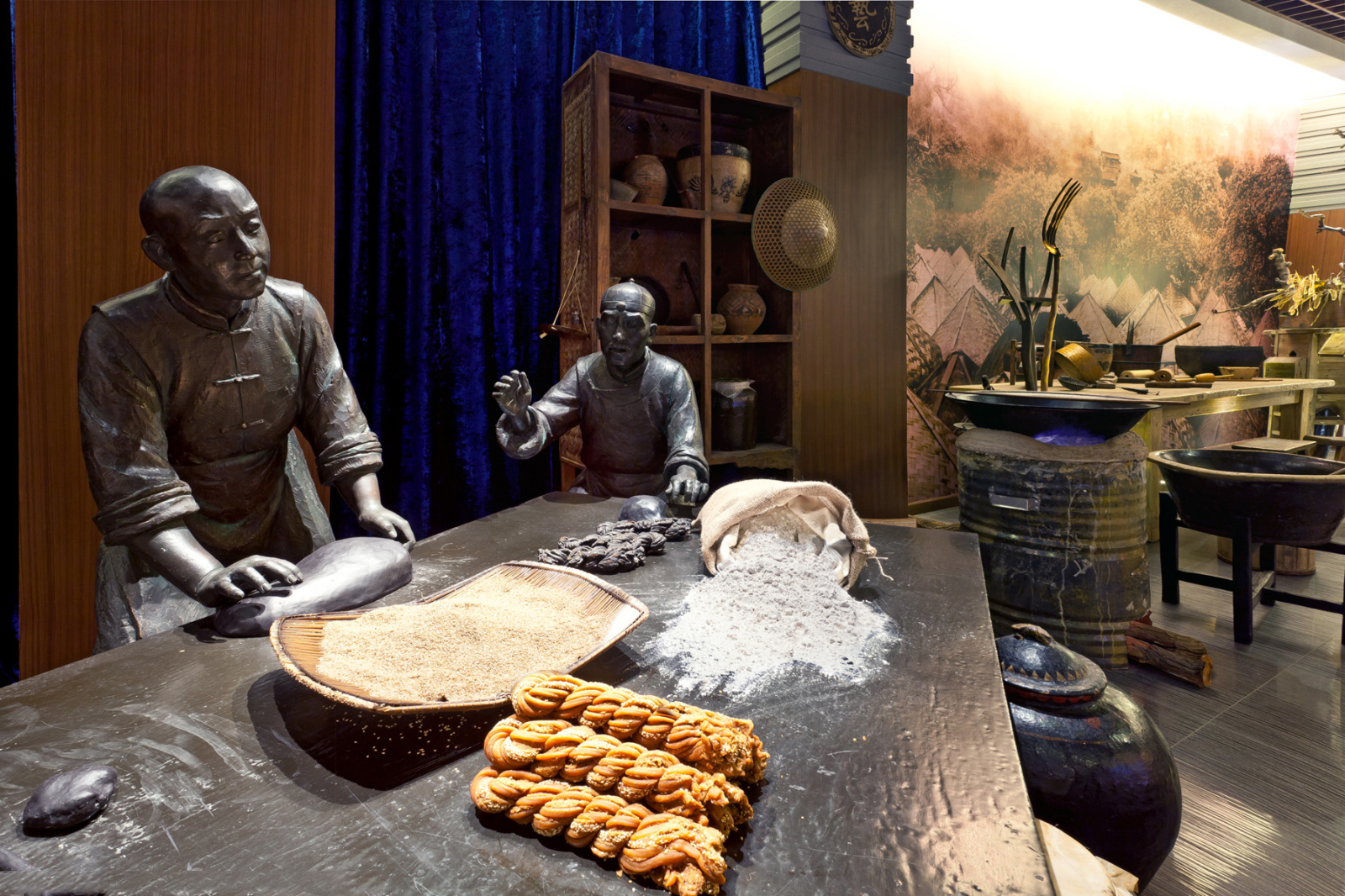Innovation adds value to old brands

Bronze figures in an exhibition depict traditional Chinese pastry masters of the Tianjin Guifaxiang 18th Street Fried Dough Twists Corporation kneading dough to make fried dough twists.
For many years, Chinese consumers have favored time-honored brands.
With demand so high, it is difficult to book a table for Spring Festival dinner at either the Beijing Quanjude Roast Duck Restaurant or Tianjin Goubuli Stuffed Bun Restaurant. The silk shops of Suzhou Qiantaixiang and Shanghai Laofengxiang always seem jam-packed with customers. And people stand in long queues to buy the Hangzhou Zhiweiguan and Chengdu Laitangyuan traditional dessert dishes.
Despite these high-profile success stories, there does remain cause for concern. The Ministry of Commerce has pointed out that there are more than 1,000 registered time-honored brand corporations, and approximately 70 of them are listed on stock markets. Only 20 to 30 percent of these old brands have steadily expanded their businesses, and most of the registered companies are facing difficult circumstances. Old brands are more than market actors for profit. They are significant carriers of Chinese culture, and they hold the dual role of both economic and cultural revitalization.
Brand innovation
The primary method for boosting time-honored brands is to utilize modern technologies to upgrade industries and lay equal stress on keeping original brand advantages and creating new brands.
Brand building requires these companies to exert continuous effort and innovation, but enterprises can lose credit at any moment when they fail to obey market rules. Dishonesty can leave brands in tatters. The maintenance of traditional product-making technologies and brand innovation measures, including the use of new marketing methods to expand brand influences, can tackle the issues relating to fake time-honored brands in the market.
Market creation
For a long time, many time-honored brand corporations didn’t attach equal importance to marketing over manufacturing, which has gradually become a problem for old brands and resulted in them falling into disfavor among consumers. Some companies still blindly believe an old Chinese saying—good wine needs no bush, metaphorically meaning good products can live without marketing. But this does not reflect the reality of their businesses.
They witnessed the decline of consumers, but they had no idea how to revive their companies or take back their former market share.
Actually, markets can be created. There is no doubt that creating a new market needs new products. The launch of new products on the market requires advertising, trade fairs and promotional activities. In addition, old products equipped with new functions are also “new products,” which can expand the market. For instance, at the end of April, approximately 20 overseas university students in Beijing, who came from the United States, South Korea, Russia, Pakistan and other countries, participated in a tasting event hosted by the Beijing Red Star Erguotou Distillery and experienced the charm of traditional Chinese white liquor.
Cultural inheritance
Time-honored brands are precious resources of Chinese culture. These companies’ stories of arduous efforts, established practices and principles passed down from generation to generation, along with the reputations they hold at home and abroad, are forms of intangible value that are as precious as gems and have withstood the tests of history.
We cannot destroy and abandon these traditions in our hands, and we need to revive these companies’ vitality through system transformation and renewal of ideas. This is also a form of cultural inheritance.
But inheriting the cultural legacy of old brands doesn’t mean we should accept these companies’ traditions and old practices without question. Instead, we should choose wisely and abandon obsolete ideas, which can truly contribute to cultural inheritance.
